Testing
geo-konzept offers a variety of solutions for blast testing and analysis. We work together with leading manufacturer MREL, from Canada. The solutions on offer are sold and maintained by geo-konzept. We also take care of all support.
geo-konzept offers a variety of solutions for blast testing and analysis. We work together with leading manufacturer MREL, from Canada. The solutions on offer are sold and maintained by geo-konzept. We also take care of all support.
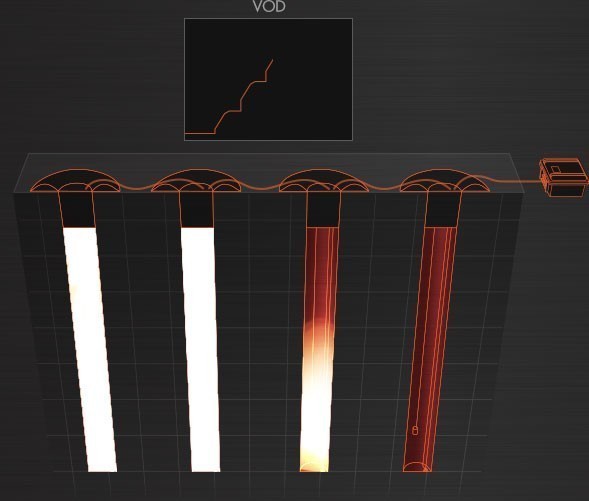
 Detonation velocity is a primary quality characteristic in explosives. If an explosive does not provide sufficient power, it can have a considerable effect on blast results.
Detonation velocity is a primary quality characteristic in explosives. If an explosive does not provide sufficient power, it can have a considerable effect on blast results.
The MREL HandiTrap II is an easy-to-use and affordable system for measuring detonation velocity for an explosive sample or blasting column in a single blasthole. The collected data can be used to check explosive quality, and/or to compare detonation velocity with manufacturer specifications.
— Easy to use and very light (size: 12*6.5*4 cm; weight: 0.3 kg)
— 12 Bit resolution
— Very easy to use
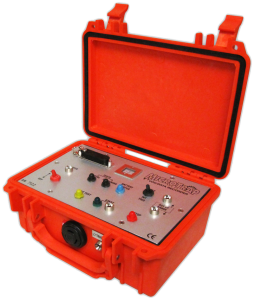 Detonation velocity is a primary quality characteristic in explosives. If an explosive does not provide sufficient power, it can have a considerable effect on blast results. The MREL MicroTrap, in comparison to the MREL HandiTrap II, offers the additional option of determining delay times between multiple blast holes and recording data from additional sensors.
Detonation velocity is a primary quality characteristic in explosives. If an explosive does not provide sufficient power, it can have a considerable effect on blast results. The MREL MicroTrap, in comparison to the MREL HandiTrap II, offers the additional option of determining delay times between multiple blast holes and recording data from additional sensors.
The MREL MicroTrap is your best choice for recording additional detonation velocity data from external pressure, acceleration or thermal sensors. The device offers up to four additional channels for processing data from external sensors. Furthermore, the device can record detonation velocity in multiple blast holes and also measure the delay between holes.
— 14 Bit resolution
— Simultaneous measurement of detonation velocity in multiple boreholes
— One up to four channels possible, e.g. for connecting pressure sensor or vibration measurement devices.
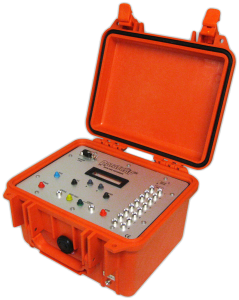
Detonation velocity is a primary quality characteristic in explosives. If an explosive does not provide sufficient power, it can have a considerable effect on blast results.
The MREL DataTrap II, in comparison to the MREL MicroTrap, offers the option of measuring at even higher temporal resolution and processing data from even more external sensors.
Do you need to measure detonation velocity at very high temporal resolution? Do you require data from more than four external sensors? Does your entire blast project need to be checked for delays between blast holes? Then the MREL DataTrap is the right tool for your measurements. The device offers recording rates between 1 MHz and 20 MHz per channel and can be connected to as many as eight external sensors. This means you could simultaneously examine up to eight explosive samples or blasting columns in blast holes for detonation velocity, or determine delays between up to 32 boreholes.
— Highly precise
— Delivers high-quality results
— Tolerant against damp and dust as well as high and low temperatures
— 14 Bit resolution
— Eight up to 56 channels possible, e.g. for connecting tremor or vibration measurement devices
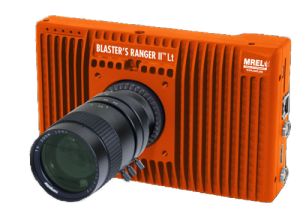 The Blaster’s Ranger II LT digital high-speed camera allows you to analyze the effects of a blast on rock structure. Additionally, actual firing times can be determined for individual blast holes. The Blaster’s Ranger II LT camera is a complete, high-speed video recording system with an easy-to-use user interface. Unlike the MREL Blaster’s Ranger II camera, the LT version does not have an LCD screen and can be used with a Notebook, for example.
The Blaster’s Ranger II LT digital high-speed camera allows you to analyze the effects of a blast on rock structure. Additionally, actual firing times can be determined for individual blast holes. The Blaster’s Ranger II LT camera is a complete, high-speed video recording system with an easy-to-use user interface. Unlike the MREL Blaster’s Ranger II camera, the LT version does not have an LCD screen and can be used with a Notebook, for example.
Incorrect detonator delays or surface delays can negatively impact rock fragmentation and increase ground vibrations. Using the included ProAnalyst software, detonator times can be documented for individual holes in sub-milliseconds. Furthermore, projectile velocity, rock trajectories or stock throw-off can be quantified. These data can help further optimize blasts.
— Easy to use
— Light sensitivity: 250 ASA monochrome, 200 ASA color
— Resolution (max): 640*480 pixels; 1,280*1,024 pixels (HR version)
— Max. frame rate: 16,000 fps
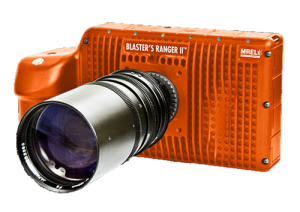 In comparison to the Blaster’s Ranger II LT camera Blaster’s Ranger II offers improved performance in terms of spatial and temporal resolution. This allows you to work in a wider range of lighting conditions and get an even higher accuracy when determining firing times, rock movement and trajectories.
In comparison to the Blaster’s Ranger II LT camera Blaster’s Ranger II offers improved performance in terms of spatial and temporal resolution. This allows you to work in a wider range of lighting conditions and get an even higher accuracy when determining firing times, rock movement and trajectories.
— Light sensitivity: 2500 ASA monochrome; 2000 ASA color
— Resolution (max): 1,280*1,024 pixels
— Fast lens
— Max. frame rate: 112,000 fps